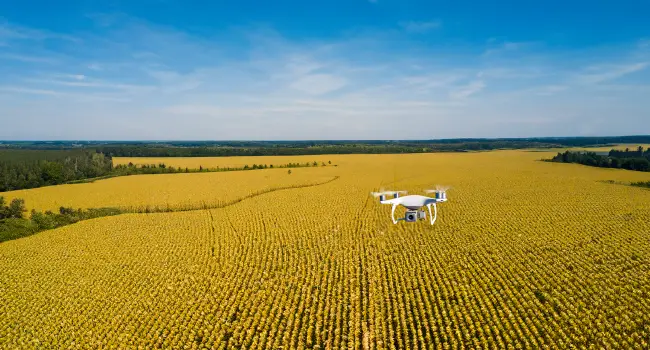Agriculture Drones

Agriculture has always been a labor-intensive and time-consuming profession. However, in recent years, technology has played a significant role in making farming easier, faster, and more efficient. One of the latest technological advancements in agriculture is the use of agriculture drones.
Agriculture drones are unmanned aerial vehicles that are equipped with high-tech sensors and cameras. These drones are used to capture data and images of crops and farmlands. The information collected by these drones can be used by farmers to make informed decisions about irrigation, fertilization, and other aspects of crop management.
Agriculture drones are becoming increasingly popular among farmers due to their numerous benefits. Here are some of the advantages of using agriculture drones in farming:
-
Precision Agriculture: Agriculture drones capture detailed information about crops. This information can be used to create detailed maps of farmland, which can help farmers to identify areas that need special attention. This allows farmers to optimize the use of their resources and reduce waste.
-
Improved Crop Health: Agriculture drones can also be used to monitor crop health. The high-resolution images captured by these drones can help farmers to identify crop diseases, nutrient deficiencies, and other issues that could affect crop yield. This allows farmers to take corrective action before the problem gets out of hand.
-
Increased Efficiency: Agriculture drones can cover large areas of farmland in a short amount of time. This allows farmers to gather data and make informed decisions quickly. This can help farmers to save time and money by reducing the need for manual labor and other resources.
-
Reduced Environmental Impact: Agriculture drones can help farmers to reduce their environmental impact. By using data collected by these drones, farmers can optimize their use of resources such as water and fertilizer, which can help to reduce waste and minimize pollution.
Despite the numerous benefits of agriculture drones, there are also some challenges associated with their use. Here are some of the challenges that farmers face when using agriculture drones:
-
Cost: Agriculture drones can be expensive, especially for small-scale farmers. The cost of purchasing and maintaining these drones can be a significant barrier for some farmers.
-
Technical Expertise: Using agriculture drones requires technical expertise. Farmers need to know how to operate and maintain these drones, as well as analyze the data that they collect.
-
Regulation: The use of agriculture drones is regulated by the government in some countries. Farmers need to comply with these regulations, which can be time-consuming and add to the cost of using these drones.
Agriculture drones are an innovative technology that has the potential to revolutionize the way we farm. These drones can help farmers to improve crop health, increase efficiency, and reduce their environmental impact. However, the high cost and technical expertise required to use these drones may be a barrier for some farmers. As technology continues to advance, it is likely that agriculture drones will become more accessible and easier to use, making them a valuable tool for farmers around the world.
Next up: Mapping Drones

